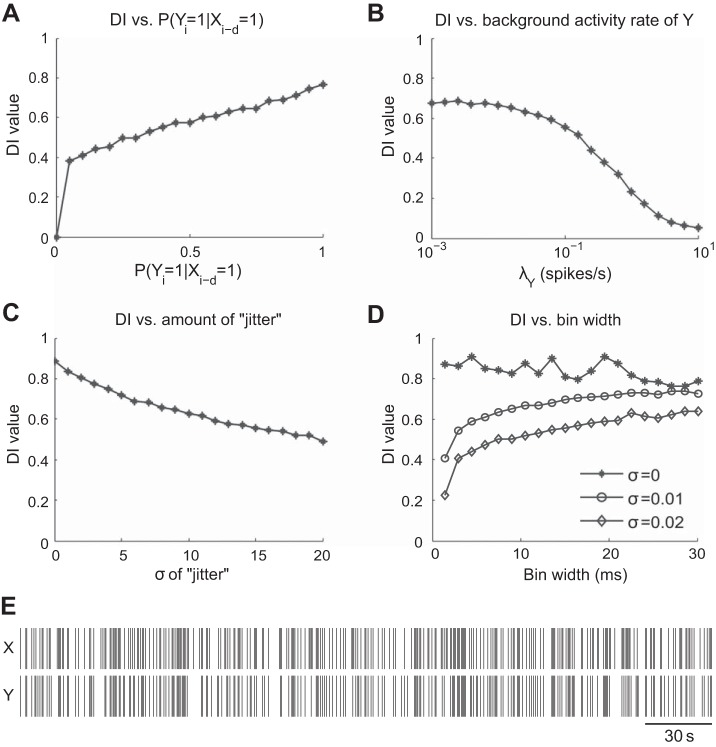Fig. 4.
Trends of normalized DI tested under the sparse Poisson spiking model. Parameters such as synaptic strength, background activity rate of the postsynaptic neuron, amount of “jitter” for postsynaptic spikes, and bin width were examined. A: relationship between DI and varying levels of synaptic strength. Synaptic strength was varied by changing the probability of a postsynaptic spike being elicited after a presynaptic spike. As predicted, DI value increases with a stronger synapse when the baseline activity level in Y is kept constant. B: relationship between baseline activity level λY of Y and DI. The value of DI decreases as the baseline activity in Y increases. C: relationship between the variance of the time course of the synaptic action and DI. The value of DI is inversely related to the variance of the time course. D: relationship between bin width and DI for different levels of “jitter.” A large drop in DI can be observed for σ ≥ 0.01 for small bin widths (≤3 ms). However, relatively small changes in DI can be seen for bin widths ≥ 10 ms. At σ = 0, DI remains high regardless of the size of the bin width. E: sample spike trains generated by the Poisson spiking model. λY = 0.1 and other parameters are the same as the model in B.

